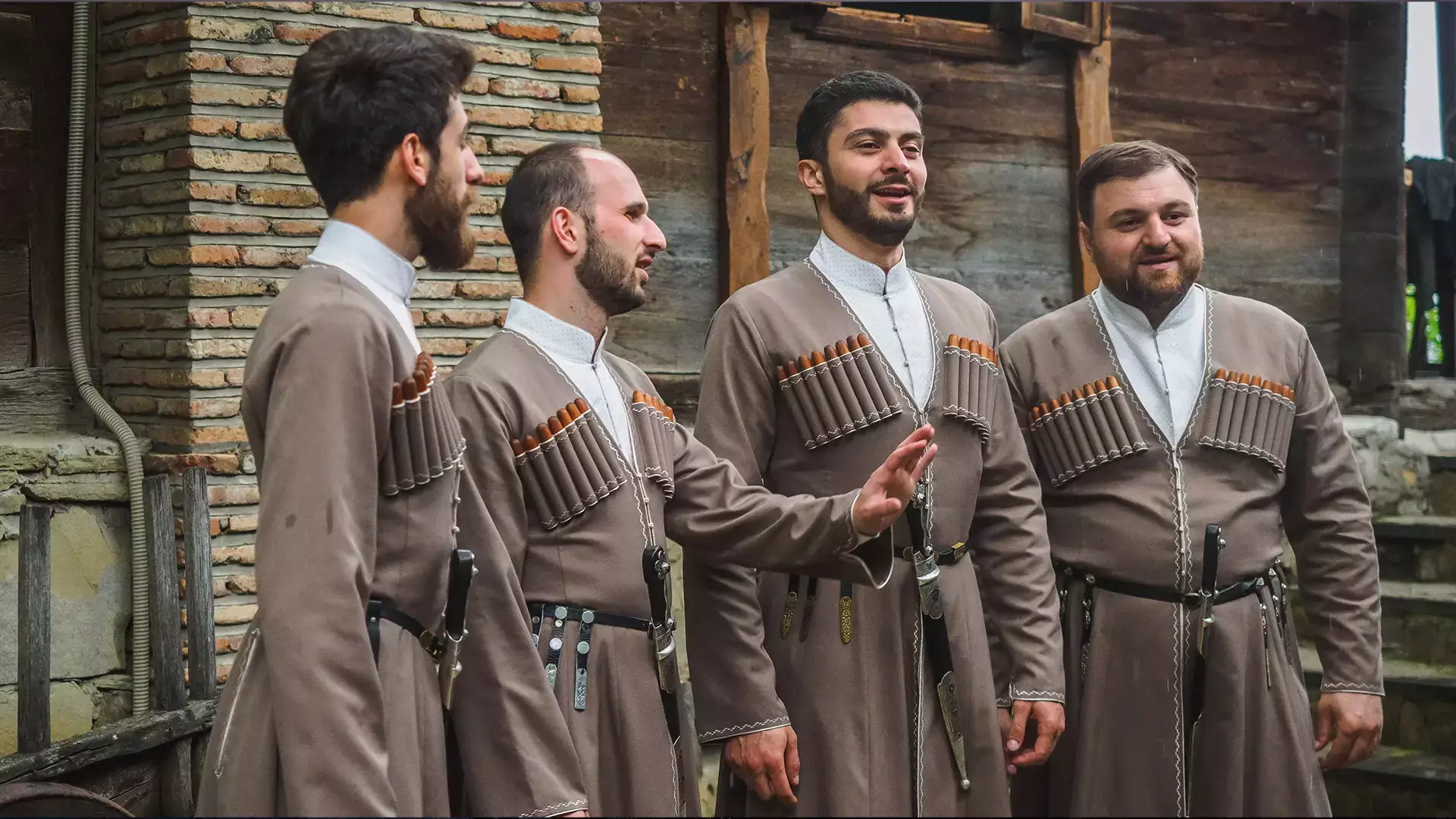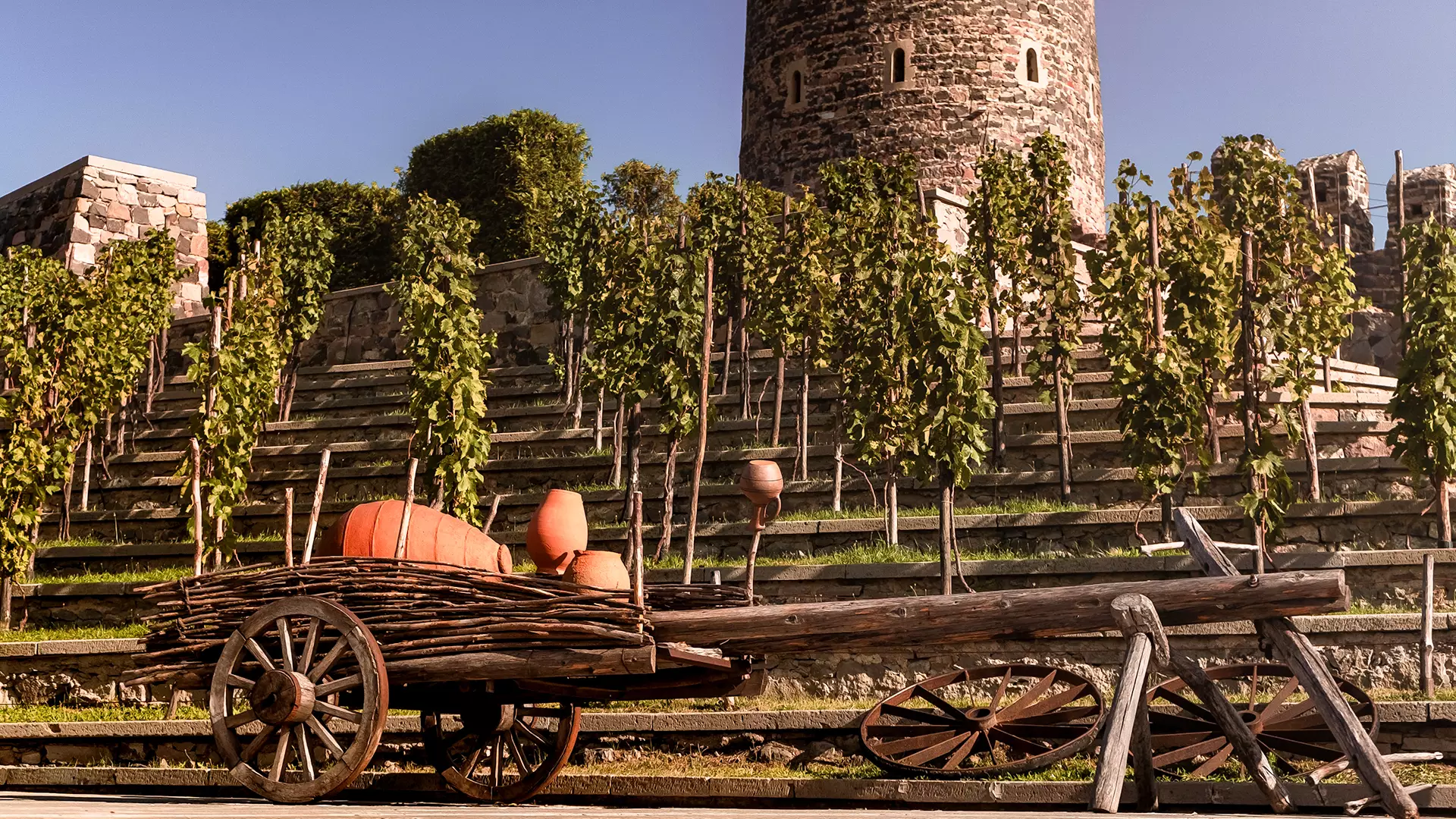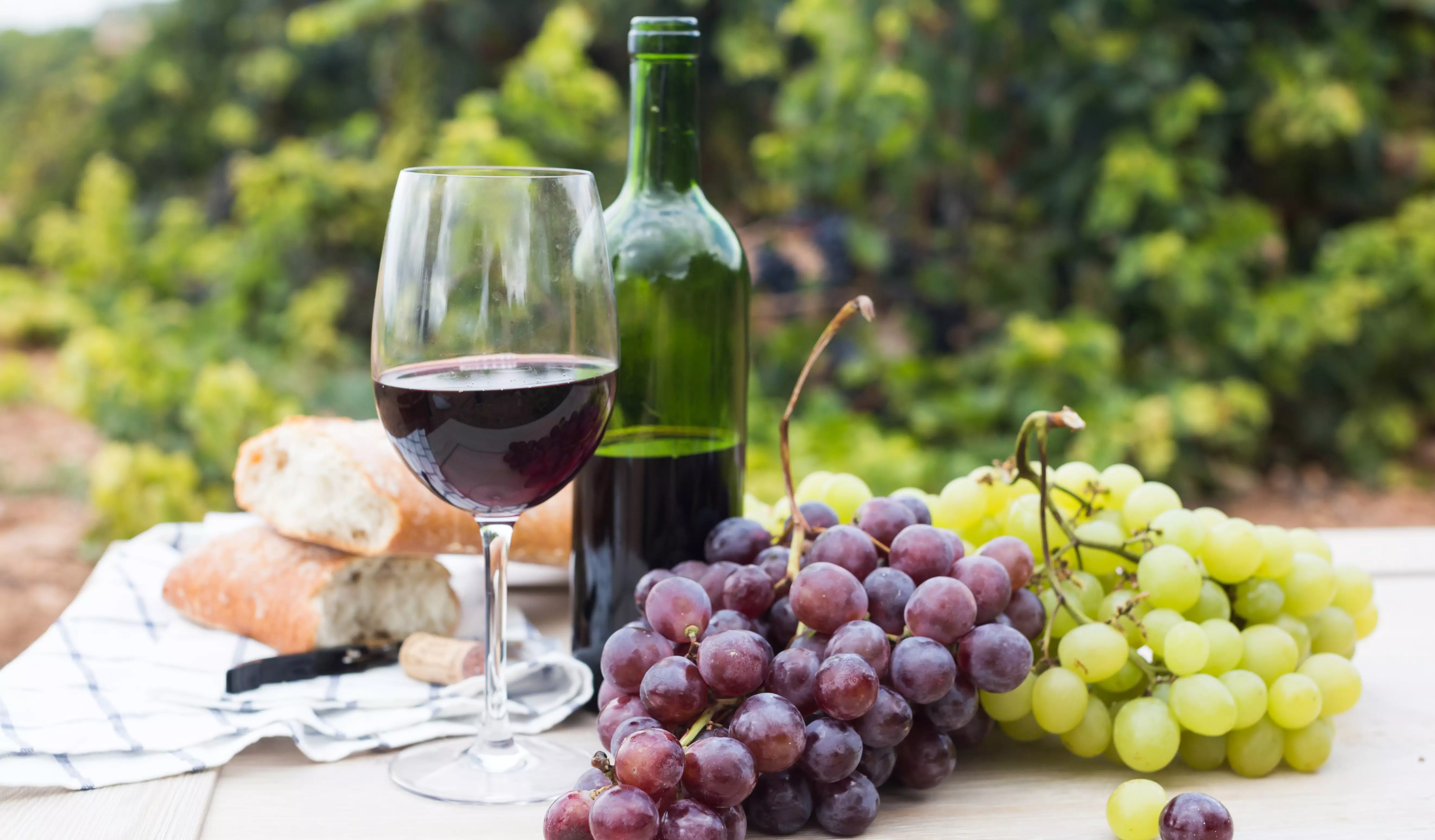Georgian Wine - 8000 Year Old Tradition
Georgian wine’s long and remarkable history, dates all the way back to 6000 BC. While much has changed in the eight millennia between then and now, the country’s love for wine and its winemaking traditions have endured. Here, we look at how the story of Georgian wine started and how it has progressed.
Georgian Wine History
Biblical time begins 5604 years before the birth of Christ when God expelled Adam and Eve from paradise. If we add this year to our current date, Adam and Eve existed 7626 years ago, or hundreds of years after Georgians had started using Qvevris to make wine.
It’s also interesting that the first lover of wine among the Bible characters was Noah – yes, the same Noah who built the ark and saved humanity.
There is a Georgian legend that says when the ark washed up on the shores of Mt. Ararat, Noah, and his companions headed for the slopes of the high mountain. This mountain was in the Caucasus region, and it was here where Noah first tried wine. Many Georgians believe this area was Marneuli, where the oldest traces of wine in the world were discovered, dating back those very 8000 years.
Did Georgians invent wine?
Legends are great, but science is better. The discovery from Gadachrili Gora in Marneuli Municipality was studied by Georgian scientists and specialists from seven different countries, led by Patrick McGovern, biochemist, wine researcher, and a professor at the University of Pennsylvania.
After three years of research, the country of Georgia has been confirmed as the birthplace of wine, courtesy of archaeological evidence showing that wine was being made here circa 6000 BC. Specifically, the remains of grape pips and potsherds have been found in more than 50 sites across the country, backing up Georgia’s claim to be the “cradle of wine.”
This collected proof indicates that the people in Neolithic times who lived on the territory of what today is Georgia were the very first in the world to produce wine.
Is Georgian wine the world’s oldest?
The first winemaking traditions in Georgia were developed by the Shulaveri-Shomu culture around 6000-4000 BC. A quick look through the ancient artworks of the 3rd and 2nd millennia BC (such as silver, gold, and bronze artifacts) reveals the importance of wine even back then, with imprints of vines, grapes, and leaves visible.
Indeed, high-carat gold cups embedded with precious stones and an ornate silver pitcher, both dating to the 2nd millennium BC, are presented at the State Museum of Georgia. Meanwhile, wine jugs and cups have been found in ancient tombs as well.
The role of wine in Georgian culture grew over the millennia and became increasingly popular upon the Christianization of the country in the 4th century AD. Legend has it that when Saint Nino was spreading Christianity across Kartli, she carried a cross made from vine wood.
Vine and Clay – The Oldest Pairing
What about Qvevris and traditional Georgian wine? With thousands of years to perfect this technique, let’s just say that the Georgians do wine well. This ancient combination of grape and clay is truly some kind of magic.
Fermenting wine in a Qvevri is no easy task. So, how did people from 8000 years ago learn this complex technique? It must have been a long way of learning by doing!
What is the qvevri winemaking method?
The qvevri is an egg-shaped earthenware vessel in which, according to millennia-old traditions, Georgian producers ferment grape juice to make wine. Furthermore, they are also ideal for storing and preserving wine.
The qvevri winemaking process involves crushing the grapes and then putting the juice, grape skins, stems, and seeds into the aforementioned clay vessel. The qvevri is then buried underground. The fermentation process lasts 5-6 months, after which the wine is ready. This method of making wine is widely used by both farmers and city dwellers alike. Meanwhile, wine plays a central role in daily Georgian life and especially in celebrations, whether they be for a religious event, a birthday, or a wedding. With that in mind, wine cellars are still regarded as sacred places within the family home. In particular, the qvevri winemaking tradition has shaped the way of life for local communities and continues to be an integral part of Georgia’s cultural identity and heritage. Moreover, wine and vines are frequently mentioned in Georgian songs, poems, and books.
Other vessels, such as chapi and satskhao, were also used to make wine When it comes to drinking Georgia’s water of life, options have included the khelada, doki, sura, chinchila, deda-khelada, dzhami, and marani.
Georgian Wine and Georgian Song
Wine is the heart of Georgian culture, and its influence can be seen everywhere. A significant portion of Georgian polyphonic singing is devoted to vine and wine. There are also ritual folk performances that were performed during the tending of a vineyard, the pressing of the grapes into wine, the opening of a Qvevri, and more. Georgians even greet the birth of a new child and the birth of new wine into the family with the same song.
Even today, farmers still sing these songs in their vineyards and wine cellars, while professional folklore ensembles bring these cultural masterpieces to the whole world through their incredible performances.
In Georgia, All Roads Lead to Wine
While traveling in Georgia you will often come across road signs that say “Wine Route”.
Following these signs will lead you to a large industrial winemaker or a small family wine cellar, where they create premium wine in small quantities. These small wine cellars will also offer local food that is a perfect match for the wine.
You will find these “Wine Routes” in nearly every region of Georgia. The list below offers just a few examples of what to try in each region.
Ajara and Guria: Chkhaveri - pink or light red wine
Samegrelo: berry-forward red Ojaleshi
Imereti: lively Tsitska-Tsolikouri and Krakhuna
Racha-Lechkhumi: sweet and fruity Usakhelouri, Khvanchkara and Tvishi
Shida Kartli: elegant Chinebuli and Goruli Mtsvane
Kvemo Kartli: golden Rkatsiteli and strawberry-like Asuretuli Shala
Samtskhe Javakheti: unbreakable Meskhuri Mtsvane, Meskhuri Tsiteli, Chitiskvertskha
Apkhazeti: exotic Avasirkhva
Kakheti: aromatic Kakhuri Mtsvane and Kisi, full-bodied Rkatsiteli and Saperavi
The only place you won’t find a wine route in Georgia is high in the mountains where grapes are unable to grow. So unless you’re hiking or skiing high at high altitudes, be sure to make time for a tasting wherever you go on your trip!
Wine and Food
What is quality wine without delicious Georgian food to enjoy with?
Georgian cuisine and wine have paired perfectly together for all these millennia, and just like Georgian wine is varied according to the place it originates from, Georgian food is just as diverse. Every region of Georgia has its unique food products and cuisine.
As much as Georgian food is unique, it is also a reflection of the foods of other cultures, a result of the country’s permanent contact with other cultures. That is what makes Georgian food so rich and varied.
Travel to this small, peaceful, and diverse wine paradise and keep your eyes open – you don’t want to miss the Wine Route!
Cookie Policy





